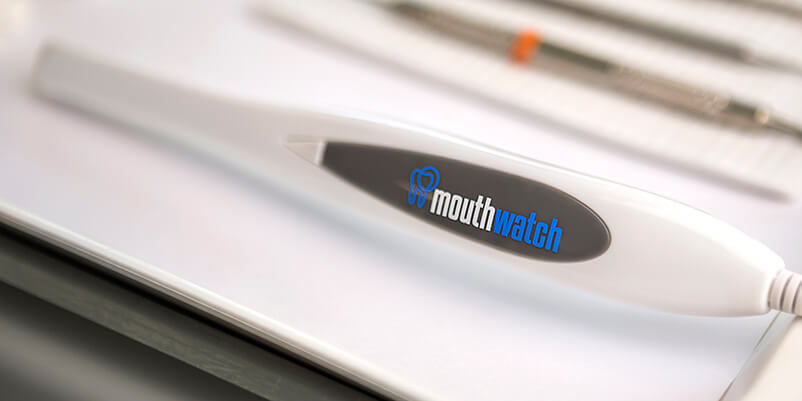
What one trick can help educate patients on a variety of conditions, increase payor acceptance and document finding all in one? Utilizing an intraoral camera does just that. Like purchasing a vehicle, all intraoral cameras have the same basic functions to capture images. Also like a vehicle, you have choices of many different options that come at a range of costs, each with different options depending on the needs of the user. MouthWatch cameras are consistent award winners with a price point that can’t be beat! Awarded by Dental Compare — “2020 Top 100 Products”, Dentistry Today — and with MouthWatch being one of Inc 5000’s Fastest Growing Companies (the only Camera/Teledentistry company!) the camera is proven to capture clear and crisp images each time.
Demonstrating the Need
Intraoral cameras offer the ability of the patient to visualize what you as a clinician are trying to explain. While the patient tries to assure you they understand, the reality is that they are trying to envision the scenario but usually do not have a good understanding without some sort of accompanied visual image. How many times have you recommended a crown but due to cost and/or lack of pain, the patient elects to wait on treatment? Displaying images in conjunction with an x-ray or treatment plans encourages patients to be involved in their own dental care and creates an urgency to be proactive. Imaging provides the incentive to fix the problem while it is manageable, before it causes pain or requires extraction. Many times, seeing the calculus accumulations and areas that can use more attention at home, provides the motivation for patients to change habits.
Use It or Lose It
One of the most important elements in integrating an intraoral camera into practice is accessibility for users, and to use them often. If the hygienist has to go search for the camera it wastes time and effort and the camera likely will not be used as frequently as it should. To alleviate the problem of a lack of use, a practice should have a camera in every operatory, especially in hygiene where most evaluations take place. For ease and flow of practice, have the hygienist be the first eyes and take images of any concerns, initial discussion of findings (without treatment planning) and have images ready when the dentist walks in for the evaluation. Having these images up and ready on the screen allows the patient to fully inspect them to formulate questions, and allows the dentist to have an unspoken heads-up upon entering the operatory. Take the time to train the staff on how to adapt and capture quality images — team confidence equates to use. Accepted treatment based off an intraoral image will pay for the cameras, one crown accepted can pay for MouthWatch cameras to outfit multiple operatories.
Case Accepted!
What if I told you utilizing an intraoral camera in treatment planning could increase your revenue by $6,000- $12,000+ annually — is the investment in a $299 camera for each of your operatories worth it? Dentists report the use of intraoral imaging in treatment plan presentation. Using an intraoral camera as part of your evaluations, treatment planning and case presentation will create trust and confidence from the patient. When presenting the images to patients, sit the chair upright (versus supine) to allow patients to have an interactive role and ask questions of intraoral imaging. You will find they have a better understanding and trust in your practice. Patients that are educated and can see their oral care needs are invested and involved in decision making for overall health. It is true — pictures speak louder than words alone!
